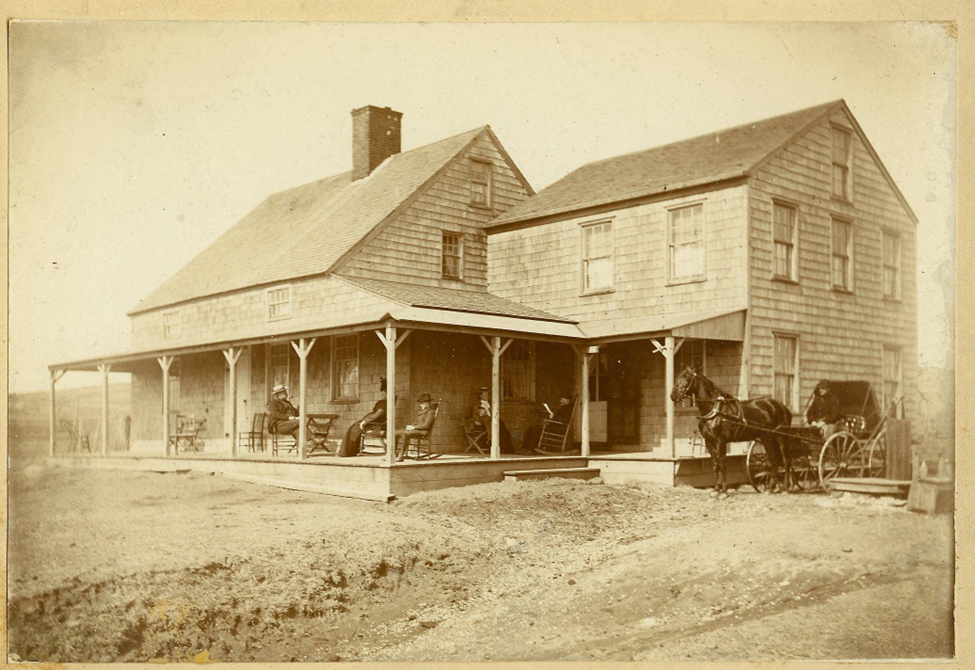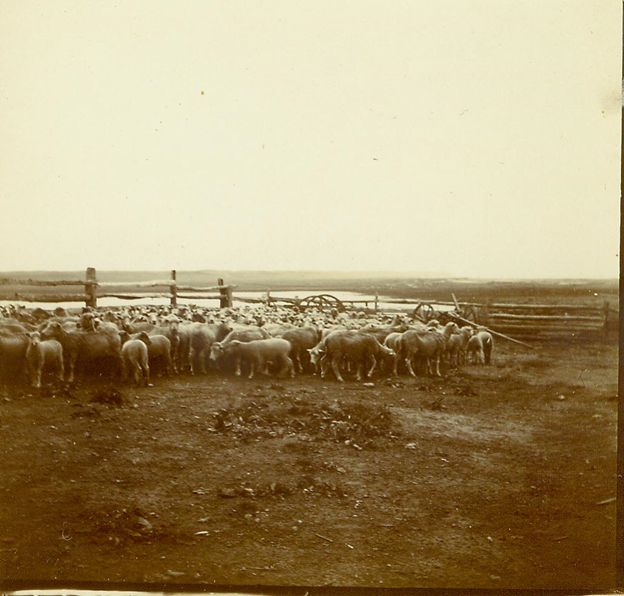

Back in the day, the proprietors of East Hampton made a living not so much by planting crops as by sending livestock to graze on 800 acres of pasture in Montauk. Renting the land together and co-managing the cattle, sheep, and horses, they also built three houses: one at what is now Hither Hills, one on Fort Pond, and one near where Deep Hollow Ranch stands today.
At the second house, a livestock manager was ensconced specifically to keep track of the sheep, also mending fences to separate them from cattle that grazed to the east. The original House on Fort Pond, as it was called, was built in 1746 and most likely destroyed by the British during the Revolutionary War when they slaughtered livestock to feed their troops. All three houses were replaced in the late 1790s and early 1800s, again with one keeper and his family settling in each. Livestock keepers were encouraged to offer room and board to visitors, be they workers, sportsmen, or tourists, as a way to earn extra income.
After Arthur Benson bought all of Montauk in 1879, he, rather than the proprietors, seems to have been the keepers’ boss, although he allowed East Hamptoners to continue to pasture livestock in Montauk. Benson modified the house on Fort Pond – by now called “the Second House” – to suit friends and family as well as the designers of the Montauk Association, the cluster of seven “cottages” he was building on the ocean bluffs. As a dedicated sportsman, he had little interest in further developing Montauk, but after his death in 1889 his children sold a large chunk of it to Austin Corbin and Charles Pratt. They declined to allow cattle to continue to graze after two and a half centuries of that tradition.
The use of Montauk pasture by East Hampton farmers had essentially ended by 1895, although Second House had a keeper (perhaps more innkeeper than sheep keeper) until 1909. Ulysses and Nellie Payne, along with his father, Elias Payne, lived at Second House in the period from 1900 to 1909. Ulysses was listed with the Census as a farmer, Nellie as running a boarding house, and their daughter, Betsy, as a waitress.

The Paynes moved into a home of their own in 1909, and Second House became a private summer residence owned by David Kennedy and his family. The Paynes’ departure had “marked the end of the era of farming and inn keeping at Second House,” Robert Hefner wrote in a historic architecture report for East Hampton Town in 2016.
The town had purchased the structure for $75,000 in 1968 from David Kennedy’s family, who used it well into the 1960s. The Montauk Historical Society opened Second House Museum early in the summer of 1969 and it has maintained it ever since.
Although there are no longer any sheep, the grounds have been used for years by the historical society for craft fairs and other fundraisers — and they will be again this weekend. The historic structure is being restored to recapture the way it appeared in 1886, when George A. Osborne, the last keeper employed by the proprietors, moved back to East Hampton. The interior is still closed for renovations, and with luck it will reopen next spring, but the exterior work has been completed and can be seen by one and all at what is informally considered the “entrance to Montauk.”


Reply or Comment